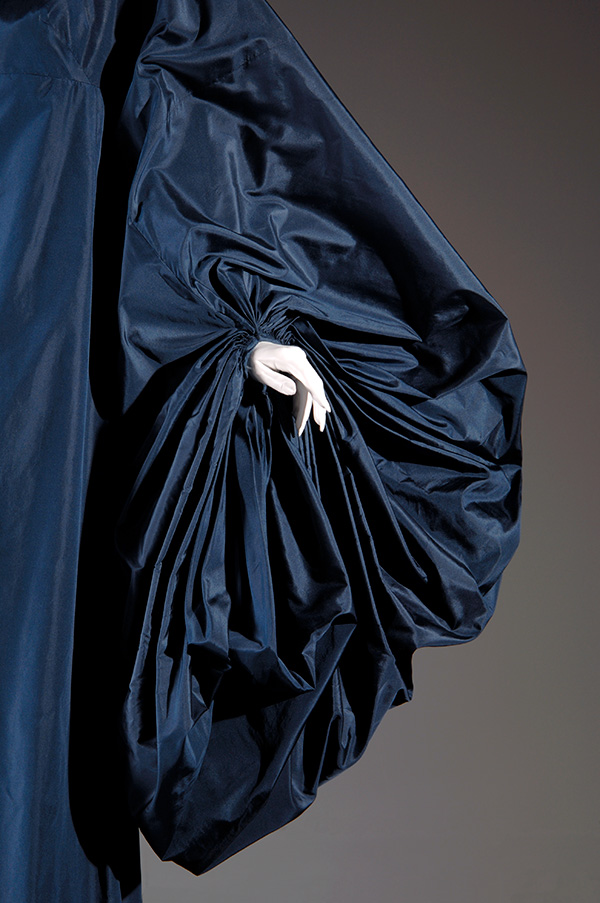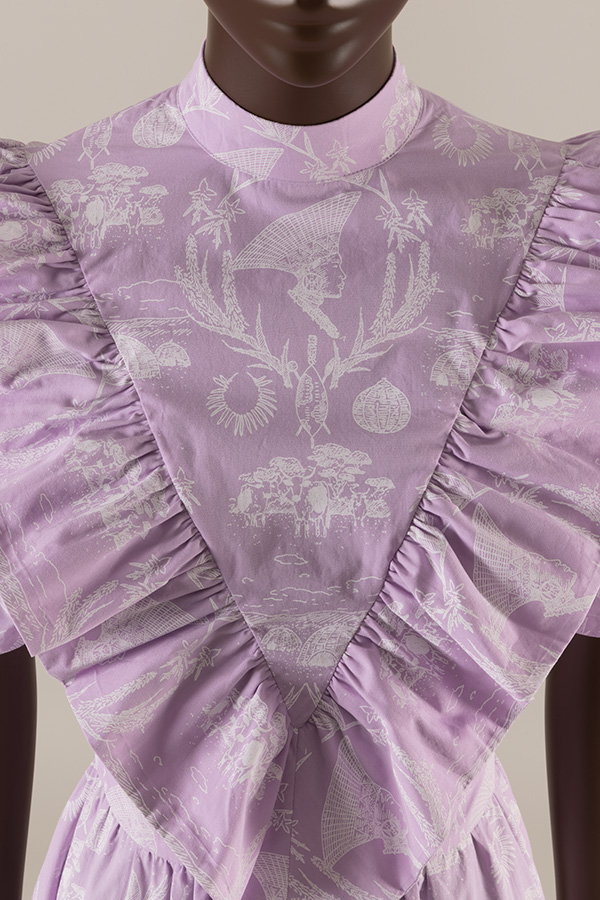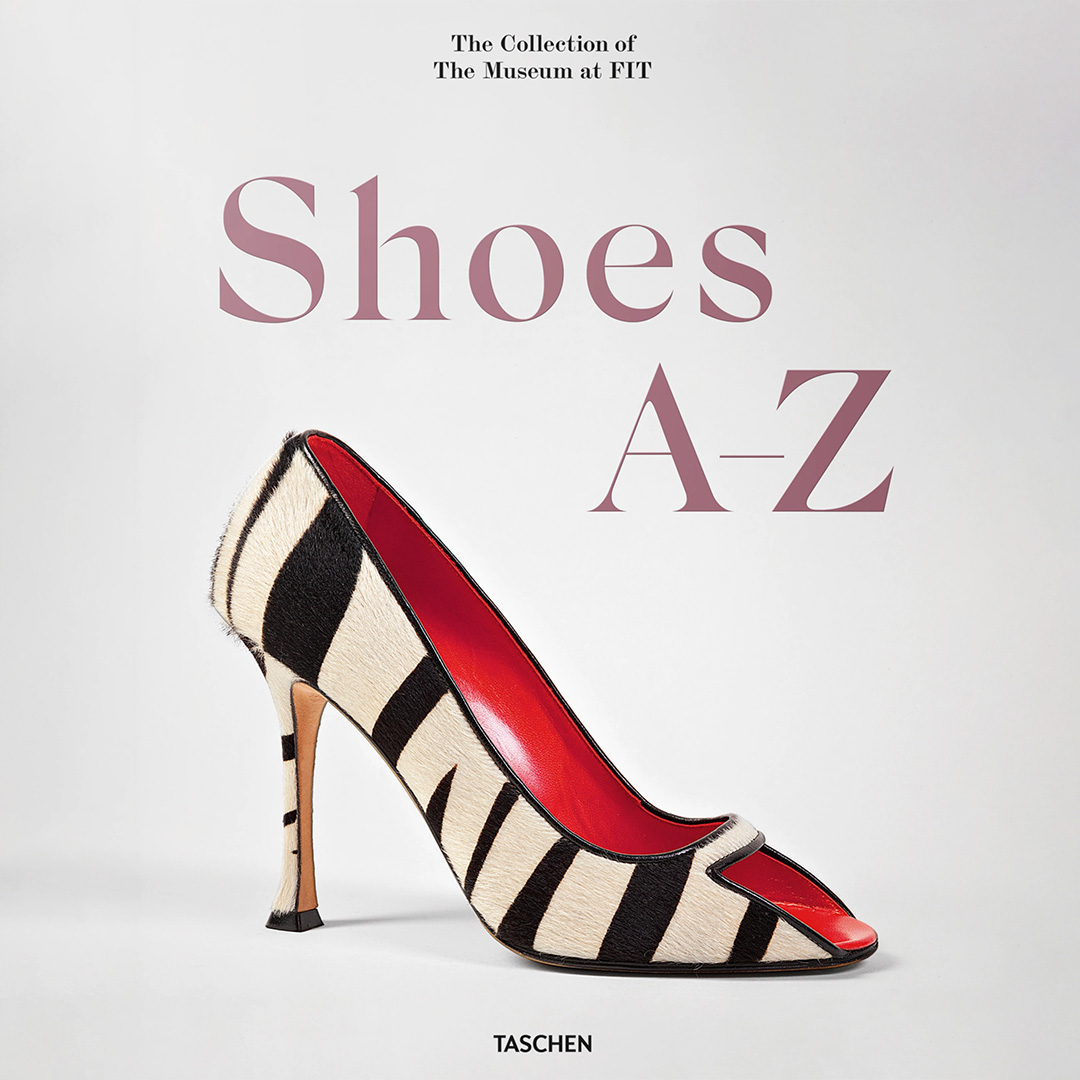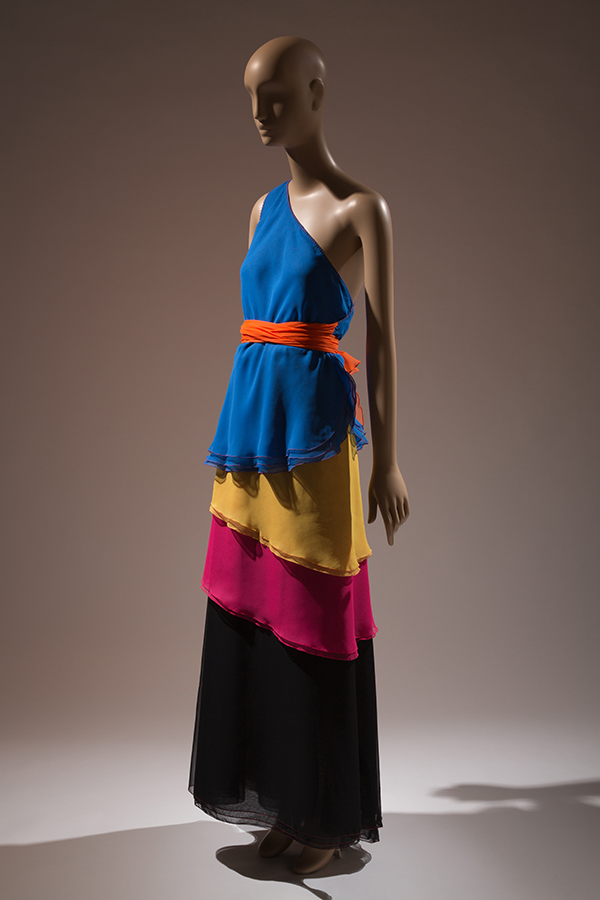Exhibitions
Statement Sleeves
Learn More
Statement Sleeves takes an original approach to the history of fashion. The selected garments date from the 18th century to the present, but they are not presented chronologically. They are instead organized by type. Following an introduction to basic sleeve shapes–from gigot to raglan–visitors will encounter the myriad ways in which designers have reinterpreted and remixed sleeves through variations in material, shape, embellishment, and even functionality. More than sixty styles, all from the museum's permanent collection, emphasize how sleeves hold the power to define a look–in both the past and present.
Image: Madame Grès, evening gown (detail), navy blue silk taffeta, circa 1980, France, gift of Mrs. Mildred Hilson, 82.234.3
FIT School of Art and Design 2024 Graduating Student Exhibition
Learn More about Exhibition Locations
The 2024 Graduating Student Exhibition presents the work of more than 600 student graduates in 16 areas of study from the School of Art and Design. The work is the culmination of each student’s unique experience in FIT’s diverse, challenging, and demanding undergraduate art and design programs. Featuring juried, award–winning, and thesis projects, this presentation is the manifestation of several years of research, experimentation, critical thinking, and artistic proficiency. The Graduating Student Exhibition advances the college’s philosophy that integrates practice in industry with theory and teaching inside the studio.
Africa's Fashion Diaspora

Examples include South African designer Sindiso Khumalo’s textile print inspired by American abolitionist Harriet Tubman, British designer Grace Wales Bonner’s tuxedo informed by the court of Emperor Haile Selassie in Ethiopia, and French designer Olivier Rousteing's collection for Balmain based on Black American cowboys. Through approximately 60 ensembles, textiles, and accessories, Africa's Fashion Diaspora illustrates how fashion designers have contributed to international dialogues to chronicle, evaluate, and expand modern ideas of Blackness.
Africa’s Fashion Diaspora is curated by MFIT associate curator Elizabeth Way.
Image: Sindiso Khumalo, printed cotton dress detail, Spring 2021, South Africa. The Museum at FIT, museum purchase, 2023.32.1
Fashioning Wonder: A Cabinet of Curiosities

An introductory gallery examines the history of cabinets of curiosities, explaining their significance to the Age of Exploration, their ties to colonialism, and the need to think more critically about contemporary museums and their objects. Within the main gallery, selections are organized into ten themed cabinets that highlight the connections between fashion and the natural world, fine art, human anatomy, and illusion. The immersive exhibition design also allows for interaction with objects, encouraging visitors to identify unusual or obsolete objects and to engage with the sensory appeal of fashion.
Fashioning Wonder: A Cabinet of Curiosities is curated by MFIT Senior Curator of Costume Dr. Colleen Hill.
Image: Mary Katranzou, "Flyphoon" dress, spring 2019. Courtesy Mary Katrantzou.

MFIT on the Road

There’s no shame in living in the past